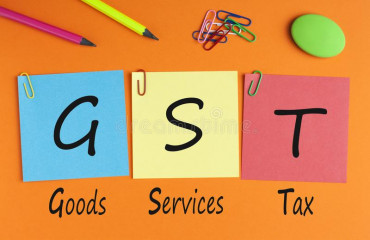
The interplay between taxation and economic development is a complex and dynamic phenomenon that often mirrors the broader financial landscape of a nation. A recent report released by the Finance Ministry sheds light on a compelling aspect of this relationship – the equilibrium between Goods & Services Tax (GST) and personal income tax in terms of their contribution to the Gross Domestic Product (GDP). In an era where economic sustainability and equitable fiscal policies are paramount, this report offers a nuanced perspective on how these two pivotal sources of government revenue intersect, offering insights into their respective roles and impacts on the Indian economy. This introduction provides a glimpse into the crux of the Finance Ministry’s findings, highlighting the key factors that contribute to the parity between these taxes and setting the stage for a deeper exploration of the implications for India’s tax regime and economic landscape.
The interplay between taxation and economic development is a complex and dynamic phenomenon that often mirrors the broader financial landscape of a nation. A recent report released by the Finance Ministry sheds light on a compelling aspect of this relationship – the equilibrium between Goods & Services Tax (GST) and personal income tax in terms of their contribution to the Gross Domestic Product (GDP). In an era where economic sustainability and equitable fiscal policies are paramount, this report offers a nuanced perspective on how these two pivotal sources of government revenue intersect, offering insights into their respective roles and impacts on the Indian economy. This introduction provides a glimpse into the crux of the Finance Ministry's findings, highlighting the key factors that contribute to the parity between these taxes and setting the stage for a deeper exploration of the implications for India's tax regime and economic landscape.
- Parity of GST and Personal Income Tax: The report shows that GST and personal income tax have maintained parity as a share of GDP. This means that both GST and personal income tax are contributing similarly to the GDP, indicating their comparable impact on the economy.
- Factors Influencing Parity: The report suggests that factors like consumption demand, compliance, and the impact of inflation have contributed to this parity between GST and personal income tax. These factors can affect the revenue generated from both types of taxes.
- GST's Significance: The report emphasizes that GST has become the largest contributor to indirect taxes since its implementation in the fiscal year 2017-18. The share of GST in GDP has increased from 2.8% in FY21 to 3.1% in FY23, indicating its growing importance in generating revenue for the government.
- Direct and Indirect Taxes: The taxation structure in India consists of both direct and indirect taxes. Direct taxes, like personal income tax and corporate income tax, are considered progressive because the tax burden increases with higher income. On the other hand, indirect taxes, including GST, custom duty, and central excise duty, are considered regressive because they are levied based on the type or value of goods rather than the consumer's income.
- Tax Receipt Projections: The report provides estimates for the growth of both direct and indirect tax receipts. It suggests that both categories are expected to grow, with direct taxes estimated to grow at 10.5% and indirect taxes at 10.4%. The estimated overall tax buoyancy (GTR) is 0.99, indicating a stable growth in tax collections.
- GST Buoyancy: As the collection from GST stabilizes, it is anticipated that indirect tax collections will receive a boost. The report estimates a GST buoyancy of 1.14 for the ensuing year. This indicates that GST revenues are expected to grow at a higher rate compared to the overall economy.
- Contribution to Gross Tax Revenue: In the budget estimates for the fiscal year 2023-24, it is projected that direct taxes will contribute 54.4% to the Gross Tax Revenue (GTR), while indirect taxes will contribute 45.6%. This split between direct and indirect taxes highlights their respective roles in generating government revenue.
